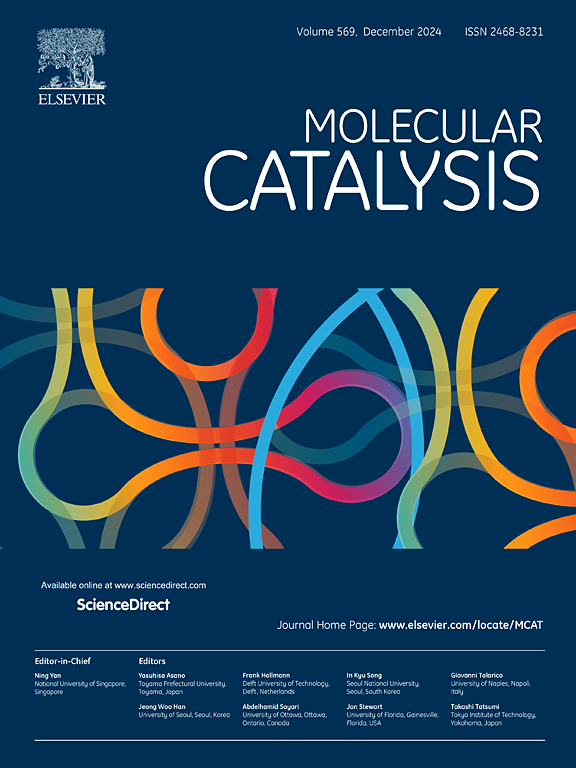Bimetallic synergy in Si-(CH₂)ₙ-Si-bridged binuclear indenyl-pyrrolidinyl titanium catalysts for ethylene/1-octene copolymerization
IF 3.9
2区 化学
Q2 CHEMISTRY, PHYSICAL
引用次数: 0
Abstract
To investigate the cooperative effect of binuclear metallocene catalysts in olefin polymerization, a series of Si-(CH₂)ₙ-Si bridged binuclear indene pyrrolidine titanium catalysts 2d-7d (Ti2) were synthesized. The mononuclear complex NC₄H₈CpC₆H₄(Me)₂SiN(CH₃)₃TiCl2 (Ti1) was also prepared for control experiments. DFT calculations show that increasing the methylene spacer length (n=2–7) simultaneously enlarges the Ti-Ti distance (8.93–14.65 Å) and reduces the buried volume (%Vbur=16.2–12.4 %). In the presence of [Ph3C][B(C6F5)4] as a co-catalyst, 2d-7d (Ti2) showed higher activity and thermal stability. For ethylene/1-octene copolymers, especially 5d (Ti2) at 120 °C, the activity was 2.65×107 g/(mol·h), the Mw was 66.93×104 g/mol, and the 1-octene insertion rate was 8.4 mol%, which were 1.8 times, 1.9 times, and 1.3 times higher than that of mononuclear 1d (Ti1), respectively. Copolymers from binuclear catalysts showed reduced crystallinity and melting points due to enhanced branching, alongside improved tensile strength and elastic recovery.

求助全文
约1分钟内获得全文
求助全文
来源期刊

Molecular Catalysis
Chemical Engineering-Process Chemistry and Technology
CiteScore
6.90
自引率
10.90%
发文量
700
审稿时长
40 days
期刊介绍:
Molecular Catalysis publishes full papers that are original, rigorous, and scholarly contributions examining the molecular and atomic aspects of catalytic activation and reaction mechanisms. The fields covered are:
Heterogeneous catalysis including immobilized molecular catalysts
Homogeneous catalysis including organocatalysis, organometallic catalysis and biocatalysis
Photo- and electrochemistry
Theoretical aspects of catalysis analyzed by computational methods
 求助内容:
求助内容: 应助结果提醒方式:
应助结果提醒方式:


